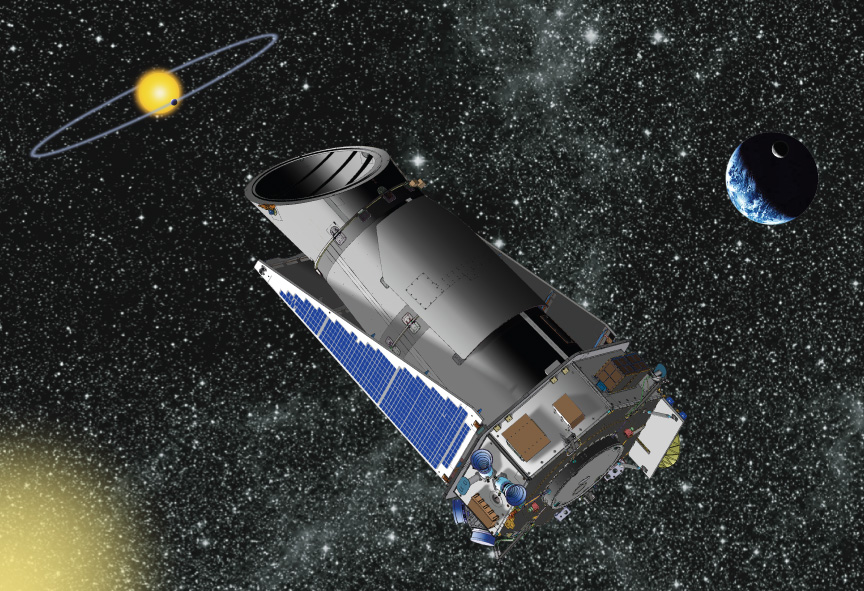Study: There are 36 other ALIEN CIVILIZATIONS in our own galaxy, but humanity is too far away to communicate with them
06/18/2020 / By Arsenio Toledo

A new study from the University of Nottingham has suggested that there are around 36 intelligent alien civilizations in the galaxy, and that these alien races are capable of communicating with each other. But while these beings may be able to communicate with each other, the team says that humans may not be able to with present technological capabilities, as the likely average distance to these advanced civilizations is at least 17,000 light years from Earth.
The researchers, whose findings are published in The Astrophysical Journal, aim to shed some fresh light on the age-old question which has puzzled astronomers: Are we alone in the Universe?
The researchers state that their work could illuminate on humanity’s future and place in the galaxy, as well as providing new insights into the chances of life developing outside of Earth.
“I think it is extremely important and exciting because for the first time we really have an estimate for this number of active intelligent, communicating civilizations that we potentially could contact and find out there is other life in the universe – something that has been a question for thousands of years and is still not answered,” said Christopher Conselice, co-author of the study and professor of astrophysics at Nottingham.
Listen to this episode of the Health Ranger Report, by Mike Adams, the Health Ranger, as he discusses how faster-than-light (FTL) technology of alien civilizations might work, helping these aliens communicate with each other over light years.
Researchers took a new approach to measuring the number of possible alien civilizations
In 1961, astronomer Frank Drake came up with the Drake equation, which is used to guess the number of alien civilizations that may be able to communicate with other alien races. While this equation is a milestone for researchers on extraterrestrial life, very few of the equation’s factors are actually measurable, and Conselice says that the Drake equation’s estimates range from zero alien civilizations to several billion. This is why he and his colleagues have decided to take a new approach.
Instead of relying on unverifiable factors listed in the Drake equation, the researchers looked inward, and assumed that intelligent extraterrestrial life will develop similar to how it did on Earth. They named this assumption the Astrobiological Copernican Principle.
One of its main principles is that, much like how it took life on Earth between 4.5 to 5.5 billion years to form, any Earth-like planet will also need approximately the same amount of time before life can “automatically form as a natural part of evolution.”
Given the very strict set of assumptions laid out under the Astrobiological Copernican Principle, the researchers estimate that there are between four and 211 alien civilizations in the Milky Way Galaxy that are capable of communicating with other intelligent alien races, with 36 being the most likely number. However, Conselice noted that this number is a conservative estimate because it is based on how long humanity has been sending out radio signals into space – just one hundred years so far.
While 36 other alien civilizations may be out there right now, the researchers believe that it will take humans at least 6,120 years before they can establish two-way communication technology with these advanced extraterrestrials, especially since they estimate that the closest civilization is some 17,000 light years away.
Conselice believes that the search for extraterrestrial life is still important, despite believing that humanity may not be able to make contact with anything more than alien microbial organisms. (Related: Aliens with green or grey skin? No, researchers say extraterrestrial life may look like pasta.)
According to him, if humans find out that alien life is much more common, then this is a good sign, as it shows that human civilization can exist for longer than several hundred years. However, if there are no other intelligent races out there, this is “a bad sign for our own long-term existence.”
“By searching for extraterrestrial intelligent life – even if we find nothing – we are discovering our own future and fate.”
Sources include:
Tagged Under: alien civilizations, alien communication, aliens, Astrobiological Copernican Principle, cosmic, discoveries, Drake equation, extraterrestrial life, Frank Drake, future science, Mysteries, research, space exploration, space travel, Unexplained
RECENT NEWS & ARTICLES
COPYRIGHT © 2017 DISCOVERIES NEWS



















